How to Use & Apply Beard Balm the Right Way in 6 Easy Steps
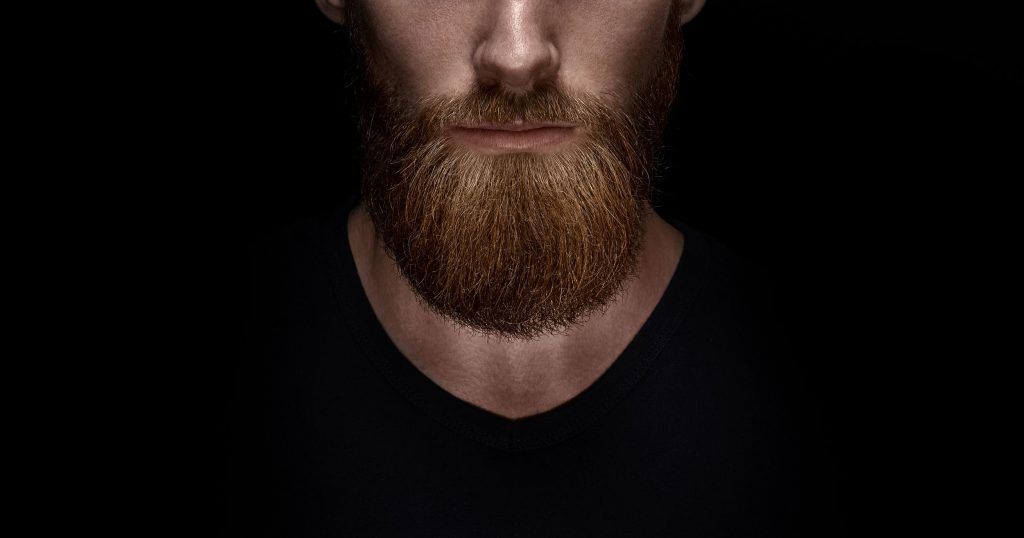
Most good things in life require some effort and maintaining a well-groomed beard that’s worthy of admiration is no exception. True, growing a beard can seem easier than shaving every day, but properly maintaining a beard requires discipline and consistent care.
Fortunately, products such as beard balm help provide a foundation for savvy beard grooming. A quality balm serves a variety of functions, as we’ll discuss in this post about to how to use (and apply) beard balm.
The best balms, such as the Honest Amish Beard Balm and Conditioner are an invaluable resource to include in your grooming arsenal.
While there’s nothing overly complicated about how to apply and use beard balm there are ways to use it that maximize its benefits while making your beard look and feel better. Let’s take a look at the steps involved in the process:
Here are some things you should keep in mind before using a beard balm
All things considered, beard balm is an effective and affordable way to care for your facial hair. It can be used in conjunction with any other products you may already use, and it doesn’t take a lot of maintenance or effort to see results. While you might not see a dramatic transformation overnight, if you’re going the DIY route, it’s certainly worth a try.
How to use a beard balm in a way that maximizes its benefits includes a variety of factors.
For one, we recommend using balms that include all-natural rather than synthetic ingredients.
Synthetic ingredients – such as sealants – can irritate your facial skin and damage beard follicles.
Balms that contain all-natural ingredients and sealants such as shea butter, lanolin, and beeswax will help hold your beard in place, soften beard hair and reduce skin irritation.
A good balm also moisturizes your skin and beard without sealing in dryness or making your beard brittle and prone to split ends and breakage. If your beard is patchy or thin, a balm that contains shea butter is a good choice because it helps beard hair appear thicker.
Why your beard’s length is important when you apply balm
Beard balm is thicker than most other beard grooming products, which is easy to tell just by looking at it.
Because it’s thicker, beard balm – in general – works ideally on thicker, longer beards. By longer, we mean when your beard’s follicles are at least 1.5 inches in length.
One of the reasons beard length is that the thicker and longer the beard, the more you need a product that provides a firm hold.
That’s not to say the beard balm isn’t as effective on shorter beards, however.
Far from it.
Balm offers many of the benefits of beard oil – such as providing moisture and relieving beard itch – and the shea butter found in most balms provides a superior hold regardless of beard length.
In general, however, beard balm is your go-to product when your beard becomes thicket-like, more prone to stray hairs, and harder to tame when you’re going for a sculpted look.
But can I use beard balm and beard oil together?
There’s some debate among grooming experts regarding whether it’s wise to use beard balm and beard oil together.
Some say you should use one or the other, but not both, while others say a combination of balm and oil packs a powerful one-two punch that’s hard to beat. So, we’ll let you decide whether they can work hand-in-hand, but here’s how to use beard oil and balm together.
- Begin by applying beard oil shortly after you’ve finished showering. How much you apply depends on the length and thickness of your beard but, in general, a few drops should suffice at the start. You can always apply more if needed.
- After you’ve rubbed the oil between your fingers and massaged it into your beard (and down to the skin underneath) use a quality beard brush – preferably boar bristle – or beard comb to distribute it throughout your facial hairs evenly. The bristles of a beard brush will penetrate every layer of your beard while exfoliating the skin to get rid of dead skin cells. A comb will massage the skin beneath your beard and stimulate better blood circulation to that area of your face.
- Your next step is to apply beard balm to your beard and mustache. Work the balm through your beard with your fingers and then use a beard brush or comb to distribute it evenly. The balm adds additional moisture and tames stray beard and mustache hairs, and even adds a touch of shine.
Another way to use both beard oil and balm on your beard is to use one in the morning and one at bedtime. Beard balm offers a great solution for when you wake up with bed-beard – you know, the one with pillow dents and unruly stray hairs.
While you can also use beard oil in the morning, and many men do, you can choose to apply it just before you go to bed to keep it soft and moisturized as you sleep.
Beard oil is also a good option when you’re going on a date because most of them come in great scents (so does beard balm, for that matter, although a balm’s fragrance may not be as strong as beard oil).
Be careful to make sure the fragrance isn’t overpowering because A) subtle is always better, especially if the scent isn’t particularly to your date’s liking, and B) some people have allergic reactions to fragrances, including headaches.
If things get, ahem, particularly romantic (and physical) with your date, you may need to use a balm in the morning to re-shape your beard into its original style.
When To Apply Beard Balm is Another Important Step to Keep in Mind
Is there a right and wrong time to apply beard balm? Strictly speaking, no – but most men’s grooming experts say that applying your balm after you first get out of the shower is the ideal time.
You’ll want to gently pat some of the excess moisture out of your beard with your towel, but you also want to leave it slightly damp because that allows you to work the balm into your facial hair and skin more easily.
Once you’ve reduced your beard’s moisture to the “damp” stage, comb or brush it to remove tangles and knots, or stray hairs that have already fallen out.
Note: A multitude of loose hairs isn’t a reason to panic. It’s normal to lose facial hair every day. If you feel like you’re shedding more hair than normal, then try using a comb instead of a brush.
Whichever grooming tool you use, however, do yourself a favor and use a brush with bristles made of boar’s hair and not a comb that’s not handmade – such as the plastic kind you can purchase almost anywhere for a few bucks.
Mass manufactured combs and brushes often wreak havoc on your beard.
The How-To of Applying Balm to Your Beard (A simple, illustrated guide)
STEP 1:
Once you’ve combed your beard to get rid of tangles, it’s time to get out your container of balm and get down to business.
The first thing to keep in mind is that – like with many grooming products – less is more when applying balm, although how much beard balm to use can vary from man to man and beard to beard.
STEP 2:
In any case, use your thumb or index finger to scoop out a small amount balm, about the size of your fingernail or a marble. You can make the balm more pliable before removing it from the tin by rubbing your index finger over it in circular motions until it softens.
STEP 3:
Next, melt the balm by rubbing it between your hands until it has almost the consistency of oil. Make sure you coat both palms and all of your fingers.
STEP 4:
You also want to make sure that the balm reaches your skin as you’re applying it.
You don’t need to bend your fingers like a claw to “dig” the balm into your skin, but instead keep your fingers flat and rub deeply.
Using your fingertips and fingernails to rub in the balm as if you’re itching your face can damage beard hairs and cause split-ends.
STEP 5:
To apply the balm, start at the base of your beard and work your way up to your sideburns while making sure every area and hair of your beard gets coated with the balm.
You can use any excess balm that’s left in your hands in a variety of ways, including as a lotion or body moisturizer if you so choose.
Some men even use it to moisturize their tattoos (an important step for keeping your tatts looking fresh and colorful).
STEP 6:
Use a beard comb, preferably one made of wood, to evenly distribute the balm throughout your beard while also helping to shape it into your preferred look.
How Often Should I Use Beard Balm?
Some grooming products, like beard shampoo, aren’t meant for daily use because they can strip your skin of its natural oils.
That’s not the case with beard balm, however, and the question of how often to use a beard balm isn’t at all complicated: you can, and should, use it daily.
After all, balm helps moisturize your beard and facial skin, which addresses the issue of robbing your skin of needed oils, and keep your beard soft and manageable.
How often you use a balm may also depend on your individual need, the length of your beard, your motivation, and so on. But a daily application of balm will enhance, and not hurt, the overall health of your beard.
Why Use Beard Balm? Because it Comes With Many Benefits
We’ve already touched on some of beard balm’s benefits while discussing how to use and apply it. But it never hurts to take a deeper look. Here’s a look at some reasons why you should use beard balm:
Beard balm helps to soften those dry, brittle whiskers
You’ll often hear beard balm referred to as a leave-in conditioner because it handles the same duties as conditioners for your hair, i.e., it conditions, moisturizes, softens, and helps style your beard.
All are essential for maintaining a well-kept beard, not the least of which is softening your facial follicles.
Balm is one of the best products for softening your beard while keeping it from looking dry and frizzled. It also helps prevent split ends that can negatively affect your beard’s look and its overall health.
The carrier oils and butter used to make beard balms work together to keep your beard soft and healthy-looking.
Carrier oil comes from several types of plants, including jojoba, which closely replicate sebum oil while compensating for its loss.
If your skin is frequently dry, or if you live in a cold or dry climate, you may have a hard time keeping up with your skin’s natural depletion of sebum oil.
Beard balm is a good weapon to have in the fight against beardruff
There’s no reason to become alarmed if you notice white, dry, pesky flakes on your beard and the skin underneath when you first grow a beard.
After all, beardruff is a common occurrence, albeit one that’s a source of aggravation for many men.
Beardruff happens, in part, when the beard follicles deplete your supply of sebum oil, which is naturally produced by your skin and keeps things lubricated.
The longer your beard gets, the higher your odds of getting beardruff because your follicles need more oil and moisture to keep up with the beard’s length.
Fortunately, beard balm contains butter and carrier oil, among other ingredients, which serve to moisturize your beard and keep beardruff at bay. Both contain ingredients which closely resemble and mimic sebum oil.
Beard balm will help eliminate the itching that’s driving you crazy
Itching skin underneath your beard can occur at any time, but especially during its early growth stages.
The itching can become so unbearable that some men decide to abort the mission and shave.
But there’s no need to take such drastic measures, gents, because a product like beard balm treats your skin, not just your whiskers.
Indeed, the butters used to make beard balm provide long-lasting hydration while beeswax provides an additional layer of protection the seals the moisture into your skin and hair.
Beard balm will help you to keep your stray beard hairs at bay
While beard balm doesn’t have the holding power as beard wax, it does provide a decent hold and is suitable for use as a light styling gel.
Some men use hair gel on their beard, thinking that it will provide the same type of hold but, the fact is, beard hair and the hair on your scalp are two different things.
Many hair gels contain chemicals that may damage and irritate the skin on your face and sap its moisture, neither of which make them an attractive alternative to beard balm.
Besides, your beard hair is of a different texture, so hair gel isn’t going to provide anything near the firm hold it provides to the hair on top of your head.
But, to be clear, its “hold” isn’t beard balm’s primary selling point.
Thanks to beeswax, however, it can help keep unruly beard hairs, and your preferred beard style, in place. If you’ve ever wondered how the complex construction of a beehive stays in place without falling apart, you only have to look as far as its beeswax.
The stuff is strong.
Another benefit of the beard balm is that it gives your beard a healthy gloss – but not so much of a gloss that your beard is a shiny as a pompadour – and it helps add volume to your whiskers.
Tired of those knots and tangles in your beard? Try beard balm
If you have a beard of normal length or more, you know the sensation of running a brush or comb through whiskers that have become knotted or tangled. It’s not a pleasant experience, unless you’re into that sort of thing.
But, because it helps to soften your beard and make it more pliable, beard balm can eliminate gnarly tangles and eliminate the potential discomfort of styling your beard.
How it smells is another reason to love beard balm
Not all beard balms share the same scent but most of them smell pretty damn good.
Essential oils provide most of a balm’s aroma and come in a wide variety of scents – everything from woodsy fragrances to peppermint to, well, you name it.
The shea and cocoa butter used to make beard balm also have their own scent, although they’re less noticeable than essential oils.
The highest quality balms are often scented with natural essential oils, and not with chemical-based ingredients that can irritate the skin and leave your beard feeling brittle and dry.
Beard Balm, Beard Oil, Beard Wax – What’s the Difference?
Don’t worry about options if you want to start using products on your beard to help make it look and feel its best.
Beard balm, beard oil, and beard wax are all different products that help you maintain your beard and keep it looking great. While the terms are sometimes used interchangeably, these products can be used together to achieve a well-groomed look.
There are several types of products you can use, including beard balm, that handle everything from cleaning your beard (like beard shampoo) to holding it in place.
Beard balm, beard oil, and beard wax can serve similar purposes but are decidedly different products.
Let’s take a closer look at each product, including its purpose, ingredients, and advantages.
Beard balm
You’ll often hear beard balm described as the lovechild of “oil and wax.”
The primary reason for that is that balm combines the conditioning ingredients of oil with the hold of a wax. The balm is kind of like putting wax and oil in a blender and mixing them.
Most beard balms include beeswax and butter – usually shea or cocoa butter.
It has the consistency of lip balm or lighter hair wax, and comes in a paste that’s easy to shape in your hands before applying it to your beard.
A beard balm’s list of ingredients also includes essential and carrier oils, hence the similarities with beard oil.
But while beard oil conditions and moisturizes your beard, beard balm has the additional benefit of helping to hold your beard’s “style” in place after you’ve shaped it with a beard brush or comb.
Beeswax keeps the balm in a solid state and provides the bit of hold that helps set balm apart.
Balm doesn’t have the same holding power as beard wax, mind you, but it can tame those pesky stray hairs that stick out like a sore thumb on an otherwise well-sculpted beard. The more beeswax a balm has, the stronger its hold.
Beeswax also helps hold moisture in, which is helpful when your beard becomes longer and its follicles deplete your skin’s natural oils.
The butter used to make balms helps provide needed moisture to your beard and the skin underneath it, while it also makes balm easier to spread.
Shea butter, for instance, can reduce wrinkles on the skin while also softening it. In turn, that leads to less itching and irritated, dry skin.
Cocoa butter serves a similar purpose in balm as shea butter, i.e., it moisturizes and heals irritated skin. You’ll also find aloe butter in many balms and it, too, hydrates the skin while healing irritation.
As mentioned, many men’s grooming experts say that beard balm works best on longer and thicker beards. But you can use balm on shorter beards because of its moisturizing qualities.
Beard oil
The primary difference between beard oil and beard balm is that oil doesn’t provide “hold,” but instead nourishes your beard while making it smoother and softer to the touch.
A quality beard oil sinks deeply along a beard follicle’s shaft – all the way to its root and the skin.
If your beard itches, a common occurrence in the early stages of its growth but also anytime when your skin becomes dry and irritated, beard oil is your go-to product. Oil also is a good-to option when you want to smooth your beard and make it less unruly.
Beard oil consists of essential and carrier oils that will, among other things, help you maintain your beard.
Essential oils provide additional nutrients and minerals that aid your beard’s overall health and provide its scent, while carrier oils handle the heavy lifting of moisturizing and softening your beard.
Beard oils can vary widely in scent depending on the type of oils found on their ingredient list.
It’s important to be judicious in how much beard oil you apply, however. Too much oil can make your beard look greasy, which probably isn’t the look you want.
Beard oil works on any length or style of beard, although it’s generally more effective on short beards. Balms can weigh down a shorter beard and may not give you your money’s worth if your beard is in its infancy stage.
While beard oil provides a lighter feel and shinier look for any beard length, a beard balm can serve a similar purpose on a longer beard – especially when it comes to providing extra moisture – while having the added advantage of providing a firmer hold.
Beard wax
One way to understand beard wax is to compare it with hairspray. Women and men use hairspray to keep their scalp hair firmly in place; beard wax serves the same purpose for your facial hair.
Another reference point is to compare beard wax with mustache wax. Both serve the same basic function and if you’ve ever seen a handlebar mustache held in place, then you understand the holding power of wax.
All that said, beard wax ensures that your beard’s unruly hairs won’t fly out of place while ensuring that you’ll have a strong enough hold to survive even gale-force winds. Wax is strong – super strong – and beeswax is among its most common ingredients.
While wax doesn’t provide the conditioning and moisturizing qualities of balm or oil, it does include nutrient-rich essential oils that and moisturizing agents to aid in the fight against beard itch and dryness.
In short, beard balm is a must-have product if you truly want to keep your beard healthy and to look its best.
Conclusion
How about you? Do you use a beard balm? What’s your favorite balm? As always, we welcome your comments and suggestions, and we’d love to hear from you.
We hope the information above has been useful to you. Beard balm is an excellent natural product for your beard, and it can facilitate faster and fuller beard growth if used properly. We’ve provided a simple how-to guide that should help you use and apply beard balm like a pro. If you still have questions or concerns, feel free to ask them in the comments below, we’d be happy to help!

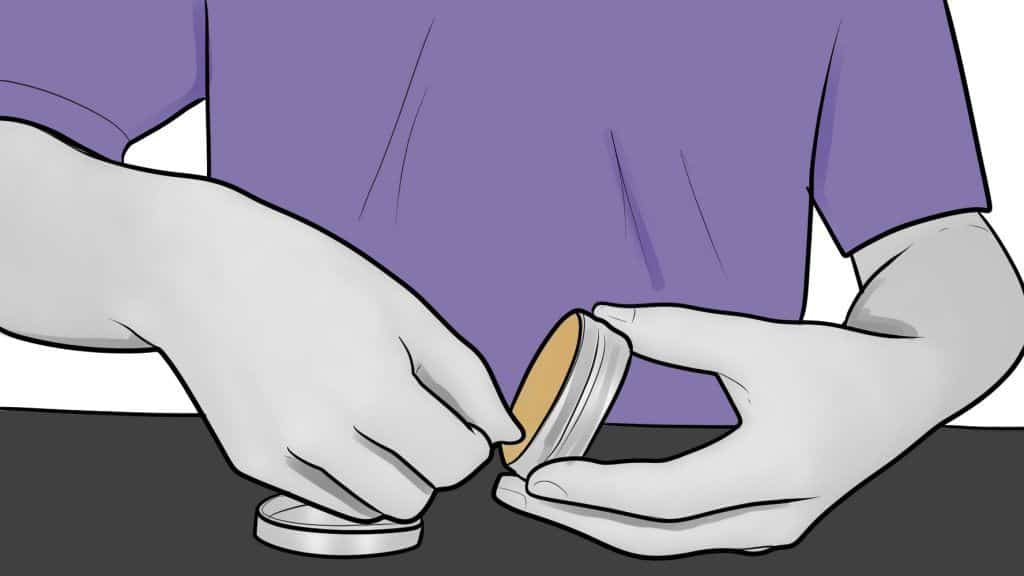
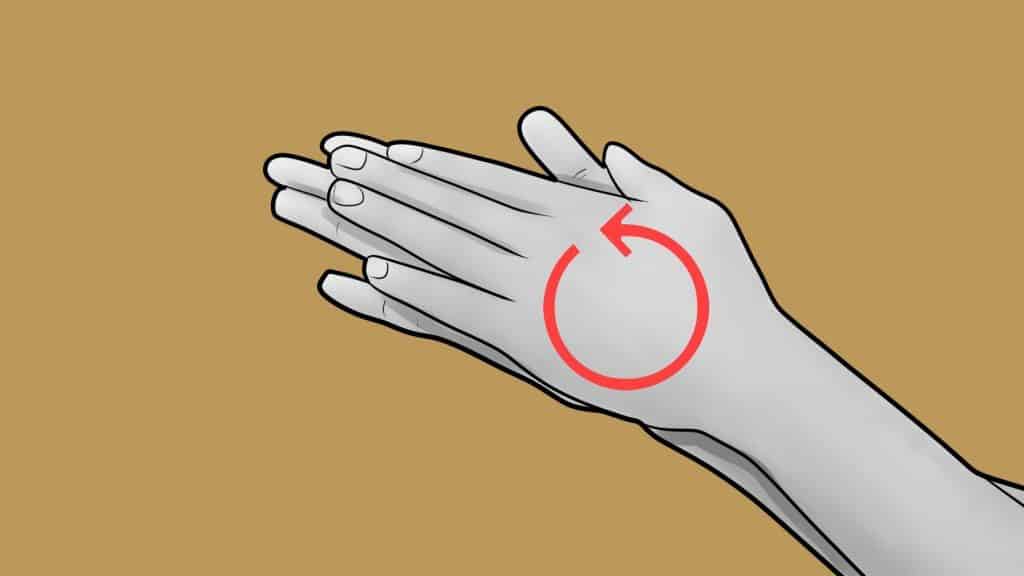

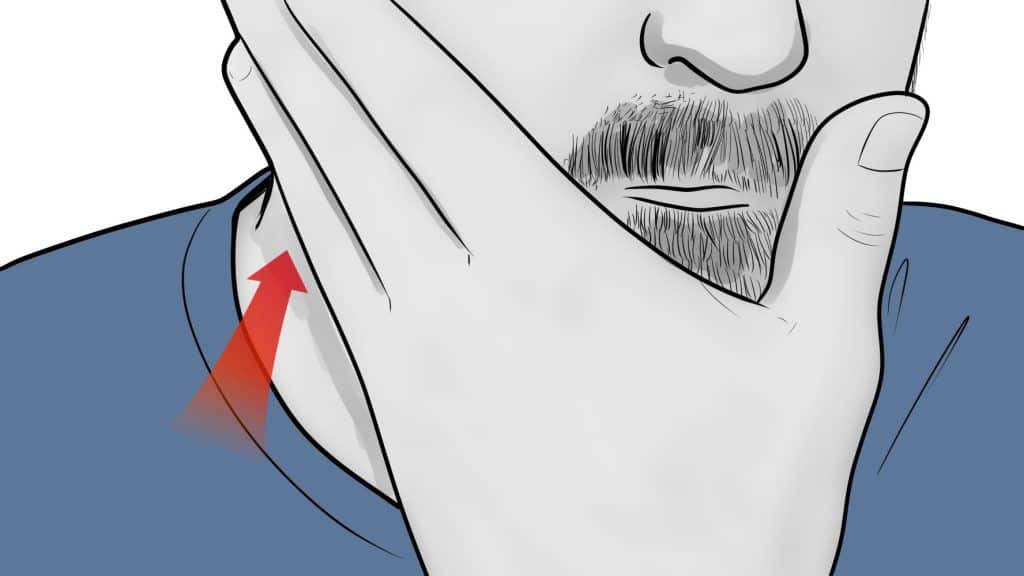
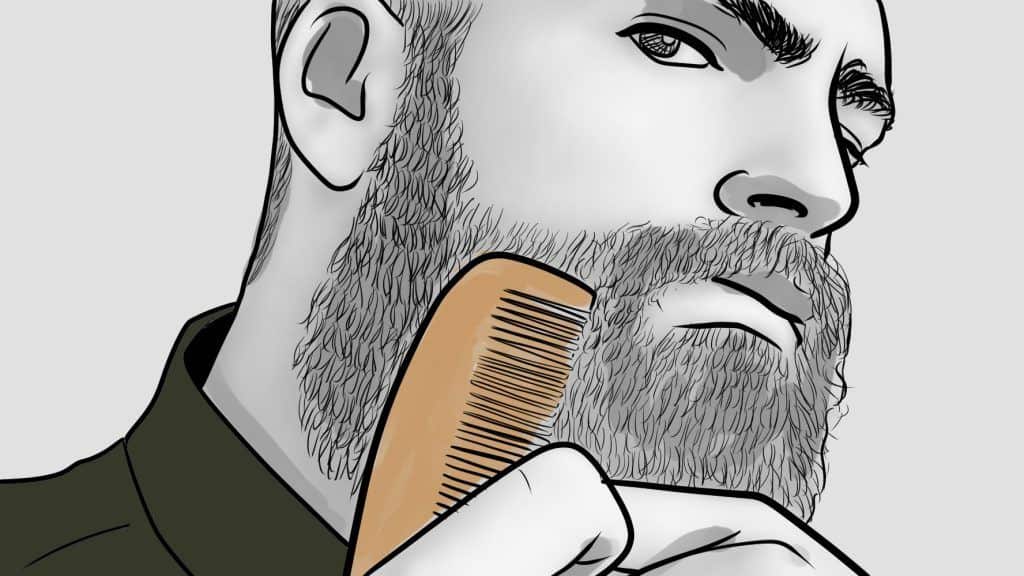
11 Comments
I have always just let my beard grow on it’s on however after this article and using I realize how much easier it is to take and have much better look for your beard a read for any one who wants a nic beard.
I use beard oil first then blow dry my beard in an upward motion then downward. I use my blow dryer on warm and then on cool to set style in place. Then to set it off I apply beard balm to give it that hold and shine which normally last all day. So I definitely use both in my daily grooming routine. I forgot to mention that I wash with a beard shampoo every other day. Which prevents stripping out the natural oils and minerals my body produces.
still not corrected
Whichever grooming tool you use, however, do yourself a favor and use a brush with bristles made of boar’s hair and not a comb that’s not handmade – such as the plastic kind you can purchase almost anywhere for a few bucks
Excellent post about beard balm. I ll refer this website to my cousin.
I prefer using beard balm because its easy to manage, but indeed what do you think Beard Oil vs Beard Balm?
Very comprehensive Article. Thank you for writing this.
There is an error in the article regarding combs.
“Whichever grooming tool you use, however, do yourself a favor and use a brush with bristles made of boar’s hair and a comb that’s not handmade – such as the plastic kind you can purchase almost anywhere for a few bucks. Mass manufactured combs and brushes often wreak havoc on your beard.”
Shouldn’t it read “…and not a comb that’s not handmade…”?
You are correct, thanks for pointing out the error. We’ve fixed it.
Great article. There are some spots that I would like to add to if given the opportunity. Beard balms are able to bring solid ingredients to your beard that you can’t include in an oil, things like Vitamin B-5 in the form of panthenol and BTMS-50 is an amazing hair conditioner.
When I look at beard balm vs beard oil, it really comes down to how much nutrition your beard needs. Balm doesn’t have to be scraped out of the tin, those with that high of wax content aren’t for every beard out there.
Solid and detailed article. I would add one cautionary tip to the end.
‘Remember that after using oil or balm, (but in my experience particularly balm) driving, drinking hot drinks or using tools without washing hands (your own, not someone else’s – that would be weird) is quite risky.
I get my stuff (UK), from the Brighton Beard Company. I love their Basil and Lime balm.
That is correct, it can be. Wash your hands or at least wipe them after applying beard balm or oil so they aren’t slippery.